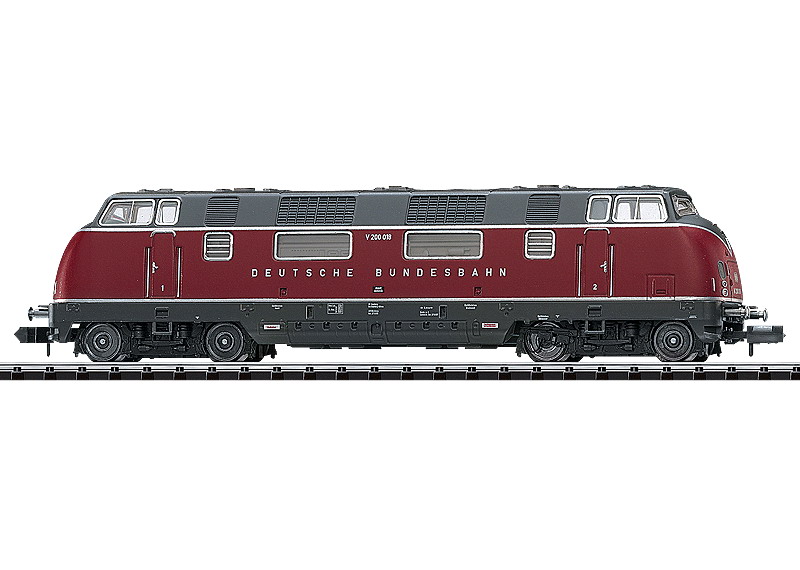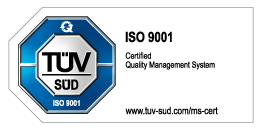Diesel Locomotive.
Prototype: German Federal Railroad (DB) class V 200.0, B-B wheel arrangement. Built starting in 1953. Use: Medium and heavy express and fast passenger trains.
Most Important Facts
| Article No. | 12402 |
|---|---|
| Gauge / Design type | Minitrix / |
| Era | III |
| Kind | Diesel Locomotives |
Check with your local dealer Find Dealer
-
Product description
Model: Era III.
The locomotive comes with the new, impressive Trix Technology:
• Die-cast metal frame and body.
• High-efficiency motor (bell-shaped armature motor) with a flywheel.
• Digital connector.
The locomotive comes with a close coupler mechanism. The white headlights / red marker lights change over with the direction of travel. 4 axles powered, 2 traction tires.
Length over the buffers 115 mm / 4-1/2".Spare parts for our articles can be found here in our spare parts search.
-
Publications
- Main Catalog 2002 / 2003 - Main Catalog 2003 / 2004 - Main Catalog 2004 / 2005 - Main Catalog 2006 - Main Catalog 2007/2008
-
Prototype information
The class V 200 was one of the flagships of the German Federal Railroad (DB) in the 1950s and 1960s. It was also a symbol that the era of steam technology was fast nearing its end. The original color scheme chosen for this class with the impressive, large lettering "DEUTSCHE BUNDESBAHN" is probably the most popular version of the V 200. The structural changes in the motive power for the German Federal Railroad emerged as early as 1949/50. A contract was awarded for the development of a two-motor diesel locomotive with 2,000 horsepower and hydraulic power transmission to replace the class 01. The plan was for these locomotives to handle the medium and heavy passenger trains on main lines, just as the 01 was doing. Krauss-Maffei in Munich was given the contract for the construction of the first five prototype locomotives. Motors for these units came from five manufacturers: Mercedes-Benz, MAN and Maybach. The two V 12 diesel motors installed in the V 200 produced 1,000 horsepower each. Hydraulic transmissions from Maybach and Voith transmitted the power to the trucks. The motors and gear drives from the different manufacturers were interchangeable with each other. In 1953, locomotive road number V 200 001 was finally presented to the public at the Transportation Exhibition in Munich. One year later the first five locomotives entered a test period. The experience from this made it prudent to increase the power for each motor to 1,100 horsepower. The practical limits of the motors in terms of power were approached within the framework of these tests for the locomotive. In 1955, the construction of the 81 regular production locomotives was begun. MAK in Kiel and Krauss-Maffei both participated in the production of this group of locomotives. The maximum speed was 140 km/h or 88 mph. After these locomotives were retired, several of them ended up in Switzerland, where they were used with success a while longer in maintenance trains. Several former DB locomotives even went to Saudi Arabia for use in laying track. Several museum locomotives have also been preserved in the class V 200.




